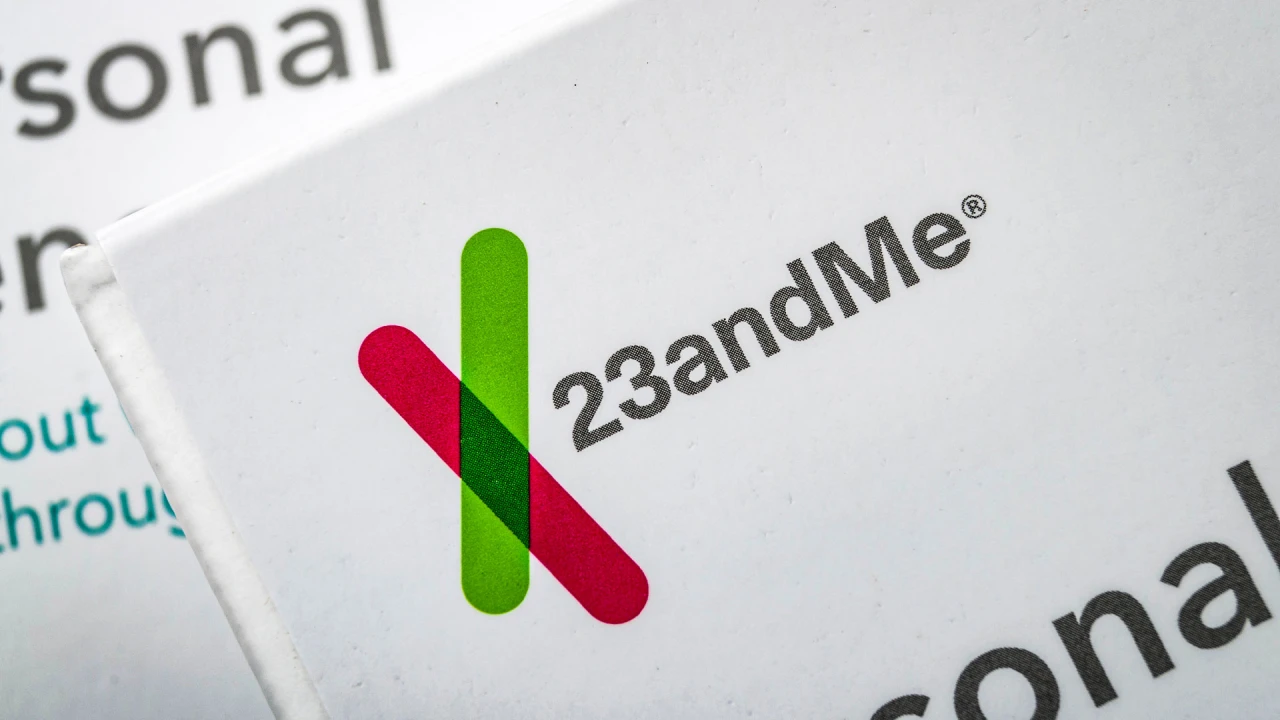What is a stablecoin, anyway? Circle’s $6.7 billion IPO filing puts spotlight on crypto tokens pegged to the U.S. dollar
The issuer of USDC, a popular stablecoin that’s pegged to the U.S. dollar, is officially launching an initial public offering. Circle Internet Group filed paperwork with the U.S. Securities and Exchange Commission on Tuesday to raise up to $624 million by offering 24 million shares to investors. With its IPO plans, New York-based Circle is hoping to put a lot of circles—well, zeros—behind its valuation, targeting up to $6.71 billion. Tuesday’s filing has been long-awaited, as the company confidentially filed for an IPO in January 2024 after scrapping 2022 plans to go public via a merger with a special purpose acquisition company (SPAC). While more players in the crypto space have been diving into public markets in recent years, Circle’s filing comes at pivotal timing amid a lot of interest in stablecoins. The company’s biggest coin, USDC, is the seventh-largest cryptocurrency by market cap, according to CoinMarketCap, and second-largest stablecoin behind Tether. You may have been hearing more talk of stablecoins among investors and even the U.S. government. But what even is a stablecoin, anyway? If you’re confused, read on for a complete breakdown of what you need to know. What is a stablecoin? Stablecoins serve a much different role in the crypto space than the likes of Bitcoin or Ethereum, which can experience wild spikes in their prices. As the name suggests, stablecoins are intentionally stable in price because their value is pegged to an asset like the U.S. dollar. Both the Tether and USDC coins are pegged 1:1 to the U.S. dollar, meaning that for every unit of these cryptocurrencies in circulation, they’re backed by $1 of cash or U.S. Treasury bonds. Their prices typically fluctuate only tiny fractions of a cent higher or lower than $1. Even amid Tuesday’s IPO news, the price of USDC was essentially flat. Circle is also the issuer of EURC, which is pegged to the value of the euro. Given their price stability, stablecoins offer a valuable ballast to investors amid the volatility of crypto markets for investors. Once popular as a bridge between traditional and decentralized finance markets, there’s been more interest in stablecoins as various countries around the world embrace cryptocurrencies. What’s the government’s stance on stablecoins and regulation? If you feel like you’re hearing more about stablecoins lately, it’s because they’ve been the topic of recent debate in the U.S. Senate. In February, Senator Bill Hagerty, a Republican from Tennessee, introduced the GENIUS Act, which would have classified stablecoins as securities under the jurisdiction of the SEC to establish regulatory guardrails for these coins. That Act would have brought a new layer of legitimacy to the crypto industry by bringing stablecoins into the regulated financial system. But the U.S. Senate voted earlier this month to block further advancement of the GENIUS Act, which was widely viewed as a significant setback for the industry. Once a skeptic, President Donald Trump has become a vocal proponent of cryptocurrencies, though some investors worry his support isn’t helping. The $TRUMP meme coin launched just days before he returned to the office for his second term. In March, he voiced his support for legislation that provides regulatory certainty for stablecoins and has said he wants the U.S. to be the “crypto capital” of the world. When is Circle’s IPO? Even though stablecoins have been the topic of much debate in Washington, D.C. that’s not likely to affect Circle’s IPO. There’s been a relative dearth of initial public offerings since an all-time record in 2021 and investors may be eager to hop aboard a new offering, particularly amid a broader market recovery. Circle has applied to list its stock on the New York Stock Exchange under the ticker symbol “CRCL” and indicated that shares could be priced between $24 and $26. But there’s no definitive timeline yet for when the stock could begin trading.

The issuer of USDC, a popular stablecoin that’s pegged to the U.S. dollar, is officially launching an initial public offering. Circle Internet Group filed paperwork with the U.S. Securities and Exchange Commission on Tuesday to raise up to $624 million by offering 24 million shares to investors.
With its IPO plans, New York-based Circle is hoping to put a lot of circles—well, zeros—behind its valuation, targeting up to $6.71 billion. Tuesday’s filing has been long-awaited, as the company confidentially filed for an IPO in January 2024 after scrapping 2022 plans to go public via a merger with a special purpose acquisition company (SPAC).
While more players in the crypto space have been diving into public markets in recent years, Circle’s filing comes at pivotal timing amid a lot of interest in stablecoins. The company’s biggest coin, USDC, is the seventh-largest cryptocurrency by market cap, according to CoinMarketCap, and second-largest stablecoin behind Tether.
You may have been hearing more talk of stablecoins among investors and even the U.S. government. But what even is a stablecoin, anyway? If you’re confused, read on for a complete breakdown of what you need to know.
What is a stablecoin?
Stablecoins serve a much different role in the crypto space than the likes of Bitcoin or Ethereum, which can experience wild spikes in their prices. As the name suggests, stablecoins are intentionally stable in price because their value is pegged to an asset like the U.S. dollar.
Both the Tether and USDC coins are pegged 1:1 to the U.S. dollar, meaning that for every unit of these cryptocurrencies in circulation, they’re backed by $1 of cash or U.S. Treasury bonds. Their prices typically fluctuate only tiny fractions of a cent higher or lower than $1. Even amid Tuesday’s IPO news, the price of USDC was essentially flat.
Circle is also the issuer of EURC, which is pegged to the value of the euro.
Given their price stability, stablecoins offer a valuable ballast to investors amid the volatility of crypto markets for investors. Once popular as a bridge between traditional and decentralized finance markets, there’s been more interest in stablecoins as various countries around the world embrace cryptocurrencies.
What’s the government’s stance on stablecoins and regulation?
If you feel like you’re hearing more about stablecoins lately, it’s because they’ve been the topic of recent debate in the U.S. Senate. In February, Senator Bill Hagerty, a Republican from Tennessee, introduced the GENIUS Act, which would have classified stablecoins as securities under the jurisdiction of the SEC to establish regulatory guardrails for these coins.
That Act would have brought a new layer of legitimacy to the crypto industry by bringing stablecoins into the regulated financial system. But the U.S. Senate voted earlier this month to block further advancement of the GENIUS Act, which was widely viewed as a significant setback for the industry.
Once a skeptic, President Donald Trump has become a vocal proponent of cryptocurrencies, though some investors worry his support isn’t helping. The $TRUMP meme coin launched just days before he returned to the office for his second term. In March, he voiced his support for legislation that provides regulatory certainty for stablecoins and has said he wants the U.S. to be the “crypto capital” of the world.
When is Circle’s IPO?
Even though stablecoins have been the topic of much debate in Washington, D.C. that’s not likely to affect Circle’s IPO. There’s been a relative dearth of initial public offerings since an all-time record in 2021 and investors may be eager to hop aboard a new offering, particularly amid a broader market recovery.
Circle has applied to list its stock on the New York Stock Exchange under the ticker symbol “CRCL” and indicated that shares could be priced between $24 and $26. But there’s no definitive timeline yet for when the stock could begin trading.




















































































































































